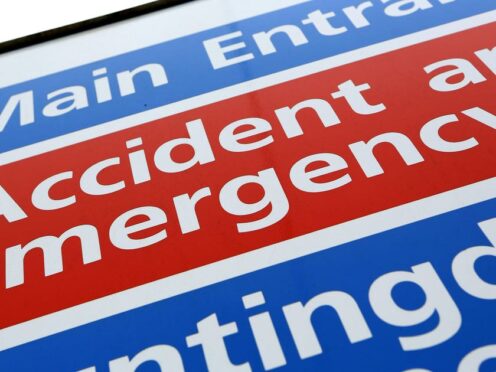Hospital emergency departments in the UK have been urged to return infection prevention and control to the “top of their agendas” or risk putting patients’ lives at risk, after a report revealed standards have slipped since the pandemic.
It warned that both staff and patients are still at risk from contracting Covid-19 and called on healthcare workers to get vaccinated against the virus, as well as getting their flu jabs.
The three-year quality improvement programme (QIP) by the Royal College of Emergency Medicine (RCEM) gathered data on more than 65,000 patients across 127 emergency departments.
It probed the level of screening across three categories, including tests for Covid-19.
It also examined screening in those with so-called “vulnerable conditions” such as being pregnant, unvaccinated or with immune system issues, and patients presenting with the likes of diarrhoea, vomiting an unexplained rash and fever.
The report found the national average of patients being screened when attending A&E was 17% last year, down from 25% in 2022.
RCEM president Dr Adrian Boyle added: “It is unconscionable that directly after a terrible pandemic that the system is not providing the standards that staff and patients need.
“We must ensure that an environment where staff and patients are protected properly against infectious diseases is the norm.”
The RCEM also found 35 of 127 emergency departments did not record any patients being screened for all three conditions.
It said “the importance of record keeping of screening should be highlighted to all staff”.
The report warned there has been “a rise in hospital attendances at our emergency departments with Covid-19” as well as a drop in the number of healthcare staff being vaccinated against the virus and flu.
“It is unclear why this is happening but we have an increasingly concerning situation for both patients and staff,” it added.
Elsewhere, the RCEM found the national average of patients identified as potentially infectious and moved to an appropriate area was 62%, down from 80%.
On average, those patients were moved in 135 minutes, up from 83 minutes in the previous 12 months and 46 minutes in 2020/2021.
In his foreword, Dr Boyle wrote that the results show “performance has dropped across all the QIP’s standards”.
He added: “In some instances, performance has dropped by over 20% across the three years, highlighting the need for trusts and hospitals to return to placing IPC (infection prevention and control) at the top of their agendas as was done in the Covid-19 pandemic.”
Among its recommendations, the RCEM said “we must continue to raise awareness that Covid-19 is present and a real risk to both patients and staff”.
It called for staff to be “encouraged” to screen patients and document results, as well as being vaccinated themselves.
It also said infection prevention and control teams must work with emergency departments to maximise patient safety.
The RCEM’s QIP team was led by Dr Fiona Burton, an emergency medicine consultant.
She said the drop in standards is “worrying” but the “highly unusual context” of the pandemic, as well as overstretched emergency departments, have to be considered.
“As Covid emerged there was naturally strong messaging about the importance of escalating infection control measures including the focus on identifying the people who were most vulnerable,” Dr Burton said.
“However, with the successful vaccination programme the messaging has lessened and assessing people’s vulnerability as soon as they enter the emergency department is perhaps no longer as prominent a consideration as it was – especially as other system pressures mount.
“But we have to remember that Covid has not gone away and it, and other infectious diseases, still pose a serious threat to patients and to staff. And that not being able to provide adequate IPC measures can put people’s lives at risk. It must remain a priority.”
Publication of the RCEM’s report comes after health chiefs warned the NHS in England is facing an “enormous challenge” due to winter pressures and industrial action by junior doctors, which started on Saturday.
Data released last week showed an average of 2,208 patients were in hospital in England each day last week with flu, including 112 in critical care beds. The figure is up by 68% compared to the start of January while the number in critical care is the highest so far this winter.
An average of 2,720 people who had tested positive for Covid-19 were also in hospital last week, down from 3,229 the previous week.
Covid-19 patient numbers peaked at more than 9,000 last winter.
An NHS spokesperson said: “NHS teams are very aware of the ongoing risk from Covid-19 and other infections with strong infection prevention and control measures in place to keep both patients and staff safe, and we continue to work with local NHS teams to promote and encourage staff vaccination.
“The NHS urgent and emergency care recovery plan sets out a range of measures to reduce pressure and crowding in A&E including greater use of community and same day emergency care, alongside more beds and measures to reduce delayed discharges which affect patient flow and how quickly someone can be admitted.”
